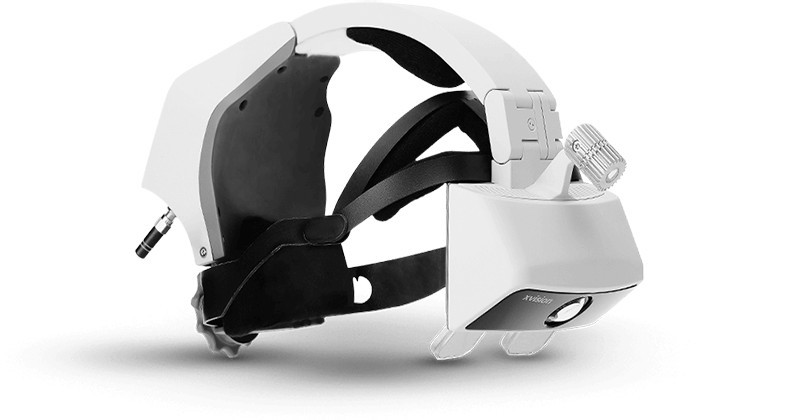
Robotic-assisted surgical systems are arguably the leading technology primed to advance orthopedics over coming decades. While the first robot hit the market nearly 30 years ago, the technology has remained in very early stages. Today, though, technology updates, the competitive landscape and surgeon and patient interest are pushing orthopedic companies to speed robotic iterations and innovations.
We recently hosted a webinar as part of our OMTEC virtual education series to discuss the role and future of these technologies in orthopedic surgeries. We pulled together forward-thinking experts from hardware and software perspectives to discuss the barriers to adoption, the sophistication of today’s technologies and future capabilities.
The discussion took place among:
Moderator: Mike Evers, Digital Content Strategist, ORTHOWORLD
Panelists:
- Peter Verrillo, Co-Founder and CEO, Enhatch
- Liane Teplitsky, Worldwide Vice President and General Manager of Technology and Data Solutions, Zimmer Biomet
- Brad Clayton, President and CEO, Fusion Robotics
Below are highlights from the discussion. The entire webinar is available at OMTECexpo.com.
Robotic Costs vs. Outcomes
Evers: What are the current strongest clinical and economic justifications for the additional expense of these new technologies?
Verrillo: It’s important to think about the past when we think about where we’re going with the future. Each time technology progresses, there is more cost for the device company, there’s more cost for the system as a whole, and prices go up. The latest version of this relates to robotics. Ultimately, robotics will lead to cost reduction and savings in many ways, but there is this phase where it’s driving more expense at the current moment to get that greater degree of accuracy, repeatability and optimum results for the patient.
Clayton: At this point, I don’t think we are economical. The people who are buying our systems and using them in the hospitals are learning to take more time, and they’re expensive. But they’re leading the way by doing the surgeries, which will get us to our end goal. This is a typical market-driven process, and we’ll get there. Will it change in five years? I think we’ll start to see the cost go down. But, I think it will be another decade before we see some really differentiated capabilities come that add value.
Teplitsky: We’re at a tipping point for technology in orthopedics in general. A lot of factors are driving that. COVID-19 has pushed us to the boundaries of how we leverage technology, pre- and post-operatively, trying to figure out remote care. That is lending itself well to the adoption of technology for better outcomes as well as figuring out the economics pre- and post-operatively. Holistically, improving on that entire continuum of care is going to lend itself well to the adoption of technology and talking about the economics around it. Patients are really going to drive technology in their healthcare. Along the spectrum, patients old and young are leveraging technology in their day-to-day lives, and I think they’re going to demand it in their healthcare as well. As industry players, we are going to find ways to ensure that what we bring to the table is going to be worth the economic impact. I do think that long-term, by leveraging these technologies, we will demonstrate that we can overcome some of the challenges we have today in length of stay and patient outcomes.
Evers: As we see procedures continuing to shift to ASCs, orthopedic companies are increasingly focused in that space. How might that impact cost considerations for large capital purchases?
Teplitsky: We find ways to not have to make the large capital purchase, but [sell] for utilization. We’re always looking for different business models to ensure that everyone can get the technology. We feel that it’s going to make the difference to that patient, and to that surgeon and their practice, and to the overall efficiency of the care that’s delivered so that they can get more throughput. That shift is going to drive technology even further, because they’re going to want faster and faster iterations to make their practice better and more accessible to patients.
Verrillo: I agree. If we look at the speed of processors and your camera’s pictures 10 years ago vs. now, all of these things are improving. This is an important part of that feedback loop that the medical device companies need. Zimmer Biomet is doing a great job at this as one of the leaders in big ortho, and that’s a critical part of this process. Every company needs to get there and produce this kind of system to understand clinical outcomes and how that ties to the pre-op plan. We need to do that to evolve orthopedic surgery and implants.
Clayton: The ASC market is going to drive efficiency and lower costs. If you can’t make it more efficient, it won’t be adopted. It’s got to be safe and efficacious because they’re risk-averse; they will not bring patients to the ASC that are complex, and it just can’t impact their time or it won’t be accepted.
Robotic Capabilities
Evers: We’ve heard from surgeons that the sophistication of orthopedic robots compares unfavorably to other industries. How would you characterize the level of technology available today in orthopedics?
Clayton: It’s not a Boston Dynamics robot dog, but if you compare orthopedic robots to a lot of robots in the world, the sophistication is there. But they all act essentially as tool holders today. They hold tools for a pedicle screw, or they’ll act as a no-fly-zone for a knee. All of that comes down to the challenge that every patient is different, every patient is a complex shape, and in spine, every patient is a moving target. It isn’t the robot per se, it’s the environment that it’s in. There are opportunities coming up in the next decade that will help with that, but it’s a challenging opportunity.
Teplitsky: One of the first things we wanted to focus on when introducing robotics into orthopedics was to ensure that we could make a smooth transition from standard instrumentation to robotics. Then from here, it’s continuing along the path of better understanding exactly how the implant should be positioned, exactly where we want to make the bone cut, what the accuracy looks like, and what different measures in the O.R. become more important. As we go forward, we’re going to get more sophisticated in how the robot may deliver some of those measures and the information you gather within that procedure. As we get these clinical insights across the continuum of care, that can guide how we build and change and evolve the technologies that we use intra-operatively as well as pre- and post-operatively.
Evers: In terms of data collection and analysis, what are some of the ways that technology can allow surgeons to benefit from this vast array of data that’s being created?
Verrillo: Surgeons have an innate algorithm and 3D modeling solution. They have the ability to do it all in their heads while they’re directing an entire O.R. of people. What robots are doing in surgery today compared to what surgeons are doing is pretty far apart. It’ll get there; it’s just going to take greater sensor technology, greater intraoperative data and better preoperative data. As we link them together, we’ll have some really interesting things to analyze and compare, and most importantly, for the software systems and AI to learn from. We don’t have petabytes of data yet on every single activity that went into a surgery. It has taken a lot of companies a significant amount of time to collect data and get data off of robots and devices. Over the next several years, that’s really going to multiply now that most of these systems are on the market. They’re cloud-based, they’re collecting the data, and we’re going to keep introducing new technology.
Robotic Utilization and Adoption
Evers: Robotics actually had really robust sales last year, despite the concurrent pandemic, related to clients in knee, hip and spine. What are you hearing from customers in terms of training and utilization rate for these newly-placed systems?
Teplitsky: We’re at the beginning of something that’s going to ramp quickly and have a snowball effect. There was a huge demand for getting robotics into centers. It speaks volumes to the perceived advantages or the advantages people have felt over time while using robotics. Across healthcare, technology and remote follow-up is very well accepted and used almost 100% of the time. Now that we are getting some onboarding and bringing competitive robots to the market, there becomes that healthy tension whether the surgeon is demanding it or the patient is demanding it. The adoption utilization has gone up significantly. With training, people want to get on board. They don’t want to be left behind with respect to both robotics as well as the technology and data along the entire continuum of care.
Evers: What are some of the barriers or obstacles that these technologies need to overcome to achieve that widespread adoption and use?
Verrillo: They need to be in every O.R. Some independent companies have developed robots that act as an open source approach, but those haven’t been the ones getting the same level of traction in the market. There’s an argument for a universal system that everyone is working toward, which is counter to what’s being done today. But we have to move to a point where we are advancing and looking at more and more procedures done this way. We’ll have more data on how they were done and why they were done the way they were. This intraoperative data flow that we’ve never truly had is critical to industry success. Robots are going to have to get smaller, technology is going to have to get faster, but this is all going to happen. When we look at adoption rates and predictions for the future, in 10 years it should be 100% — but that’s coming from a software guy who doesn’t have to build the hardware, so it’s easy for me to say that.
Clayton: I don’t see 50% happening in 10 years. In spine, we’re in about 20% of hospitals that do 80% of spine procedures. We’re clearly seeing very low utilization rates. It’s a real challenge now until they get much easier to use. I could see in the next five or 10 years penetration into the hospitals, but not 50% utilization. Minimally invasive spine surgery is still an incubating technique, and it’s maybe 20% to 25% of all procedures, and this is where the most of the value of robotics comes in. Those doing open surgery will never go to MIS or robotics, because they’re getting good outcomes doing the surgery they’re doing. I think it’s more in the 20-year timeframe. You have to provide value, and that value is through providing better clinical outcomes, having lower costs and being easier for the surgeon. If you can’t provide that value to the customer, they’re not going to adopt it.
Future of Robotics
Evers: Let’s talk about the future of robotics. As you look near-term, what are you most excited about personally?
Clayton: We benefit from consumer electronics, whether it’s heads-up displays or various others that continue to bring us value and faster processes. Competition amongst high-quality players will really increase efficiency. People develop better methods and others copy them, and the whole industry will improve. Specifically for spine, what’s really going to make the difference is either real-time low-dose or no-dose imaging. If you can track the bones in real-time dynamically, the robots can catch them and follow up with them. But we have to be able to track them. CyberKnife does that now. They’re the only company in the world today that knows exactly where the spine or brain is before they treat it. Those are coming in the next five years, and that’s what will enable robotics.
Verrillo: The hardware is fun and exciting, but it will actually be the software behind it all that drives those robots and tells those robots what to do, reads the sensors and adjusts course, that looks at the image and makes adjustments in real-time as the patient is being manipulated on the table. That can all be done with software, and that’s the boundless opportunity. The hardest part is getting large amounts of data to train the AI systems, but there’s been massive improvements in how we need to do that. Almost a decade ago, computer speed was measured in Central Processing Units (CPUs) at a much lower frequency than we’re at now. A lot of work being done today is performed on the Graphics Processing Units (GPUs), but if you think about how we’re going to benefit from quantum computing over the next couple of years, it’s raising new opportunities for us to learn faster, and to scale. Anything we can imagine and get data on, if we can make an interpolation and imagine that in our heads, and we can apply that, test that, validate that and bring it to market, we can move at breakneck speed. When we talk about intelligent surgery, that’s how we define the category: the evolution from analog to digital to intelligent. AI will give surgeons superpowers that they’ve never imagined.
Teplitsky: Let’s make tech in healthcare the same as tech in our everyday lives. Today, that’s not really the case. The big goal is to change the standard of care in orthopedics, and we want to do it by the implementation and adoption of technology. This idea of the ability to gather pre- and post-operative data, connect it with intraoperative data, aggregate it, analyze it, and then translate it into actionable clinical insights that can enhance and inform the care decision. That’s why we’re introducing this connected suite of technologies that we plan to expand and grow, from planning tools to preoperative measures, and making sure we have objective measures every step of the way.
Conclusion
The orthopedic market currently has 15 robots assisting with joint replacement, spine and trauma procedures. That number will grow. Companies of all sizes are considering robotic technology. We expect robotics to be a significant market driver as the price of technology decreases, companies develop more robotic applications, and all stakeholders harness data to improve outcomes and iterate the technology.
HT
Heather Tunstall is a BONEZONE Contributor.




